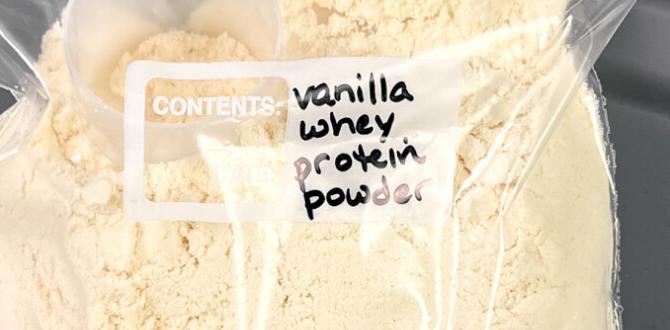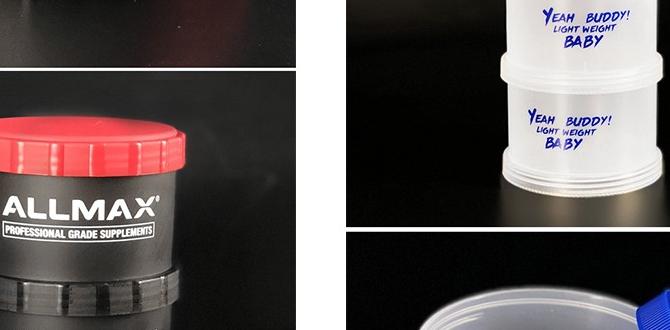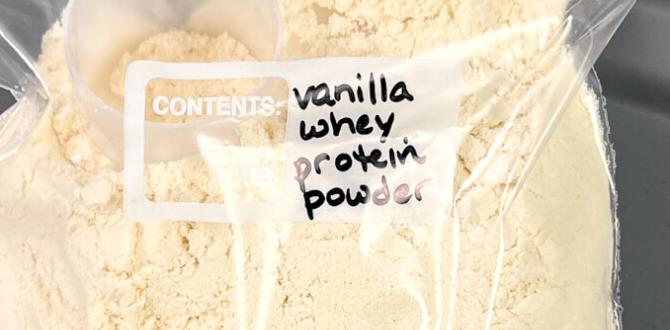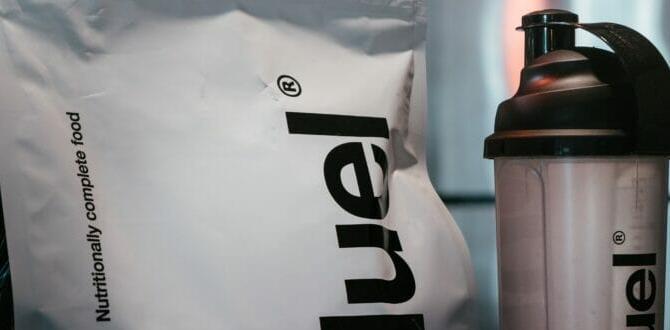In an era where nutritional supplements have become an integral part of the conscientious traveler’s regimen, navigating the complexities of airport security regulations has become increasingly pertinent. Among these, understanding the Transportation Security Administration’s (TSA) stance on transporting protein powder in carry-on and checked luggage is crucial for those aiming to maintain their dietary routines while in transit. The question, “Can You Bring Protein Powder on a Plane?” is not only common but laden with nuances that vary according to different regulatory frameworks and airline policies.
This article delves into the intricacies of traveling with protein powder, promising intriguing insights that may change the way you pack your supplements.
Packing Protein Powder For Air Travel: A Guide

understanding tsa guidelines for carrying protein powder
– specifics on the tsa’s stance on protein powder in carry-on and checked luggage – quantity limits and the 350-milliliter rule for powders
Traveling with protein powder is straightforward once you grasp the Transportation Security Administration (TSA) rules. For both carry-on and checked luggage, protein powder is allowed. However, there’s a specific guideline for carry-on bags.
If you’re packing more than 350 milliliters of powder – which is about the size of a soda can – it needs to be placed in a separate bin for X-ray screening. This rule is part of the TSA’s efforts to ensure safety and prevent any powdery substances that could pose risks. Remember, this 350-milliliter rule is not about limiting how much you can carry but rather how it’s screened. Here’s a quick glance at the key points:
- Protein powder is allowed in both carry-on and checked bags.
- More than 350 milliliters of powder in carry-ons needs separate screening.
Following these guidelines ensures a smooth passage through airport security and keeps your nutrition on track during travels.
packing protein powder for air travel: tips and tricks
– best practices for packing protein powder to prevent spillage and contamination – recommendations for containers and compartmentalization in luggage
Are you the type of traveler who can’t part ways with their beloved protein powder, even at 30,000 feet in the air? Fear not, as there are clever ways to pack your muscle-building companion without turning your suitcase into a powdery mess. First off, forget about sticking the entire bulky tub in your luggage. Instead, consider transferring the amount you’ll need into a sturdy, resealable plastic bag or a small, airtight container.
This not only saves space but also minimizes the risk of a protein powder explosion amidst your clothes.
If you’re a fan of keeping things extra tidy, divvying up your powder into daily portions could save you from the dreaded task of measuring servings in a tiny hotel room. Remember, the key here is to avoid any mess or contamination with other luggage items.
As for the containers, opt for something hard-shelled to shield your powdered treasure from the ruthless handling of your luggage. Who knew packing protein powder could be such an art form?
| Item | Type of Container | Notes |
|---|---|---|
| Protein Powder | Resealable Plastic Bag | Lightweight and saves space |
| Protein Powder | Small Airtight Container | Prevents spillage |
| Portioned Powder | Individual Bags/Containers | Makes daily use convenient |
Remember, a little planning goes a long way. You’ll thank yourself when you open your suitcase to find your clothes free of that all-too-familiar protein powder snowstorm.
Safe travels and may your gains follow you across the globe!
international travel considerations with protein supplements
– highlighting differences in international airport security protocols – advice on researching destination countries’ regulations on supplements
Taking your beloved protein powder across borders can feel like embarking on a covert mission, especially with each country playing by its own set of rules. It’s like airports are the nightclubs of travel, and security protocols are the bouncers, deciding what gets in and what stays out. Before you jet off, it’s a mighty good idea to check the destination’s door policy on supplements. A quick search online or a chat with their embassy can save you from the unexpected drama at customs.
Remember, not all heroes wear capes, some come armed with protein scoops. But even heroes need to do their homework. Imagine explaining the importance of your post-workout shake to a security agent who hasn’t hit the gym since the ’90s.
Save yourself the performance and look up what’s allowed and what’s not. Because let’s face it, your protein powder might be your trusty sidekick, but to others, it’s just mysterious powder in a suspiciously bulky container.
| Country | Protein Powder Allowed? | Notes |
|---|---|---|
| USA | Yes | Under 350ml/12oz might need additional screening. |
| UK | Yes | Advise declaring at customs. |
| Japan | Check Regulations | Strict on supplements, pre-approval may be required. |
| Australia | Check Regulations | Strict biosecurity laws, declare and expect inspection. |
While this table gives you a starting point, it’s crucial to dive deeper into each country’s specific policies. After all, you wouldn’t want your gains to be confiscated at the border. It’s this simple: a little prep work goes a long way.
So, pack your protein, research thoroughly, and may your muscles stay as pumped as your travel itinerary.
experiences with protein powder at airport security: what to expect
– common scenarios involving protein powder at tsa checkpoints – real-life traveler experiences and how they managed their supplementsImagine you’re headed to the airport, gym bag in one hand, ticket in the other, and suddenly you wonder, “Will my precious protein powder make it past security?” Fear not, fellow fitness enthusiast, for you’re about to embark on a journey through the whimsical world of TSA checkpoints. Many travelers, adorned in their best workout gear, have navigated these waters with their protein stash intact.
Common sightings at security involve agents examining protein powder containers with a curiosity usually reserved for alien artifacts. Most travelers report smooth sailing, as long as their protein is neatly packed and not suspiciously hidden inside a sock.
Some adventurers, however, share tales of having to perform the sacred ritual of the ‘extra screening’. But worry not, this usually just means they get to watch their bags of protein powder go on a mini vacation through the X-ray machine a second time.
The key to success? A friendly smile and perhaps an offer to flex your biceps. Jokes aside, keeping your powder in its original container and under 12 ounces seems to be the golden ticket. So pack that protein, flex those smile muscles, and prepare for a smooth journey to gainsville.
| Scenario | Expectation | Traveler Tip |
|---|---|---|
| Small Quantity (Under 12 oz) | Usually Allowed | Keep it in original packaging |
| Larger Quantity | Possible Additional Screening | Be patient and ready to explain |
| Loose Powder | Raised Eyebrows | Consider pre-packed servings |
faqs: bringing protein powder on a plane
– addressing common questions and concerns about flying with protein supplements – quick tips on how to streamline the security check process with protein powder
Wondering if your muscle-building buddy, protein powder, can fly with you? You’re not alone! Here’s the scoop: yes, you can bring protein powder on a plane, but there are a few things to remember to glide through security like an eagle. First, keeping your powder in its original packaging can save you from a mini workout at the TSA line.
If you’re packing more than what looks like a snack for the Hulk (read: over 12 ounces or 350 ml), you might have to let it out for a quick check. Now, for those who love being prepared, here’s a fun tip to skip the hassle: pre-pack small amounts in clear, labeled bags. This not only makes you look super organized but also might give the security officer a chuckle, thinking you’re carrying fairy dust!
| Quick Tips for Flying with Protein Powder |
|---|
| Keep it in its original container |
| For amounts over 12 oz. , be ready for a check |
| Pre-pack small amounts in clear, labeled bags |
| Smile — it might make the process smoother! |
So, there you have it. With these tricks up your sleeve, you’ll be set for a hassle-free journey with your trusty protein powder by your side.
Remember, the key to a smooth security check is being prepared and having a good attitude. Who knows, maybe your protein powder will earn its own frequent flyer miles soon!
alternative solutions for protein intake while traveling
– suggestions for protein-rich snacks that are travel-friendly – information on purchasing protein supplements post-arrival at destination
If you’re unsure about bringing protein powder on a plane, consider packing protein-rich snacks instead, like nuts and jerky, which are perfect for on-the-go munching. Once you land, you can easily find local stores or health food outlets where you can purchase protein supplements. This approach ensures you maintain your protein intake without the hassle of airport security constraints.
Here are some travel-friendly protein snack ideas:
- Nuts and seeds – almonds, cashews, and pumpkin seeds
- Jerky – beef, turkey, or plant-based options
- Protein bars – look for ones with minimal added sugar
- Cheese sticks or cubes if you have a cooler bag
Remember to check the availability of health food stores at your destination ahead of time, so you can restock your protein supplies upon arrival.
Conclusion
In conclusion, passengers can indeed bring protein powder on a plane, but it’s important to follow TSA guidelines. Keeping your protein powder in a clear, sealable bag and under the quantity limit will help ensure a smooth journey through airport security. Remember to double-check the specifics before your travel date to avoid any hiccups, ensuring a hassle-free flying experience with your nutritional essentials in tow.
FAQs
What Are The Tsa Regulations Regarding Carrying Protein Powder On A Plane In Your Carry-On Luggage?The Transportation Security Administration (TSA) allows passengers to carry protein powder in their carry-on luggage. However, powder-like substances in quantities greater than 12 ounces/350 milliliters — about the size of a standard soda can — should be placed in a separate bin for X-ray screening at the security checkpoint. The TSA recommends packing larger quantities of protein powder in checked luggage to expedite the screening process. Passengers may be subject to additional screening if the powder cannot be cleared by security.
Is There A Maximum Amount Of Protein Powder You Can Bring On An International Flight?Yes, there is a maximum amount of protein powder you can bring on an international flight, but it largely depends on the airline’s policies and the regulations of the departing and destination countries. Typically, for carry-on baggage, powders over 350 ml (about 12 ounces) may need to be placed in checked luggage or subjected to additional security checks, as per the Transportation Security Administration (TSA) guidelines applicable in the U.S. However, for checked luggage, there’s generally no limit imposed on the quantity of protein powder, but it’s wise to keep it in its original packaging to avoid delays. It’s always best to check with the specific airline and review the customs regulations of the country you’re flying to before traveling.
How Should Protein Powder Be Packed For Air Travel To Avoid Security Issues?To avoid security issues when packing protein powder for air travel, it’s advisable to keep it in its original, sealed packaging if possible. If transferring to a different container, ensure it is clear and properly labeled to quickly explain its contents. Pack the protein powder in your checked luggage rather than in carry-on bags to circumvent size restrictions and additional screening. However, if carrying on, the TSA allows powders in quantities up to 12 ounces (approximately 350 ml) to be screened separately, so adhere to this guideline to expedite security checks.
Can You Bring Both Sealed And Opened Containers Of Protein Powder On A Plane?Yes, you can bring both sealed and opened containers of protein powder on a plane in your carry-on or checked luggage. However, for carry-on baggage, the TSA (Transportation Security Administration) limits powdered substances to containers of 12 ounces (350 milliliters) or less that must fit within your quart-sized bag along with your other liquids, aerosols, and gels. For larger quantities or opened containers, it’s recommended to pack them in your checked luggage to avoid delays during security screening. Always check the most current TSA guidelines or with your airline for any updates before traveling.
Are There Specific Brands Or Types Of Protein Powders That Are Prohibited From Being Carried On A Plane?Yes, certain protein powders might be scrutinized or prohibited from being carried on a plane due to airport security regulations, particularly those imposed by the Transportation Security Administration (TSA) for flights within or originating from the United States. Protein powders, like other powders over 12 ounces (about 350 mL), may require additional screening, and if they cannot be verified as safe, they may be prohibited from being carried in carry-on baggage. It’s less about specific brands and more about the quantity and the ability of security equipment to analyze the substance. Travelers are advised to check the latest TSA guidelines or with their airline before traveling, as policies can vary internationally.
